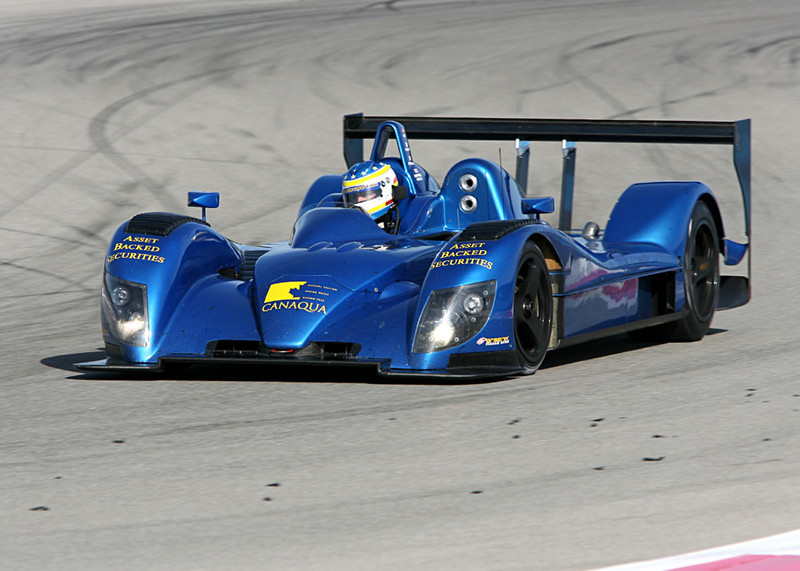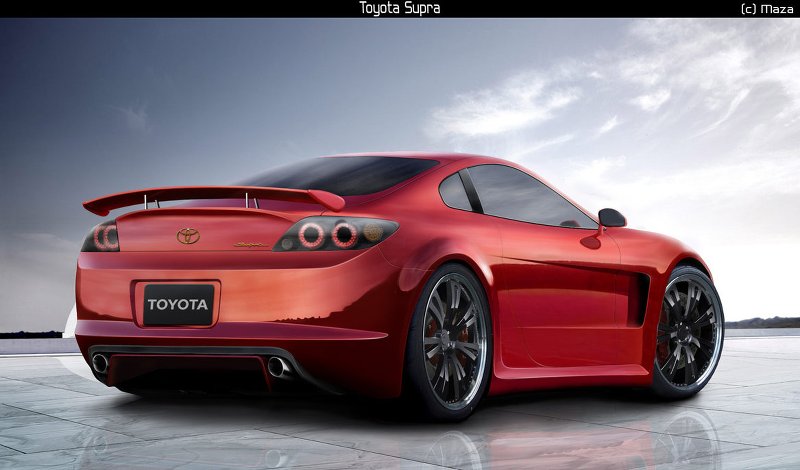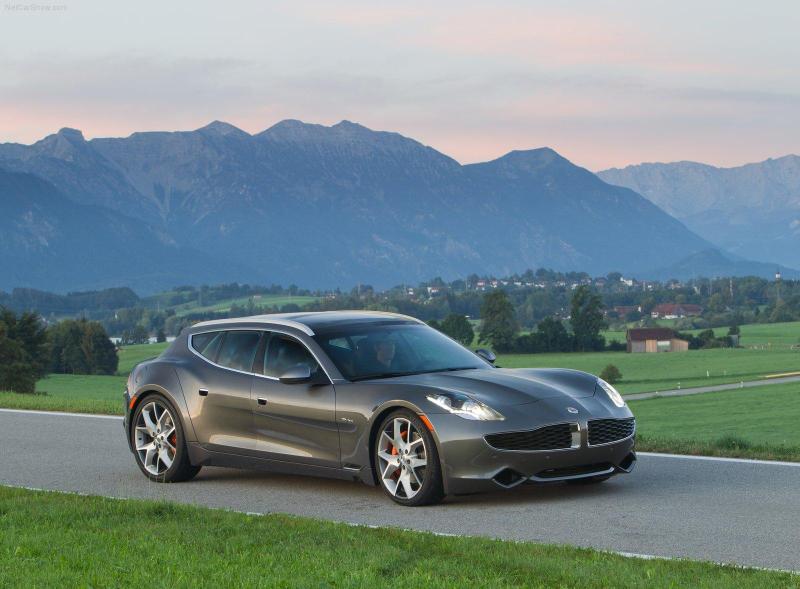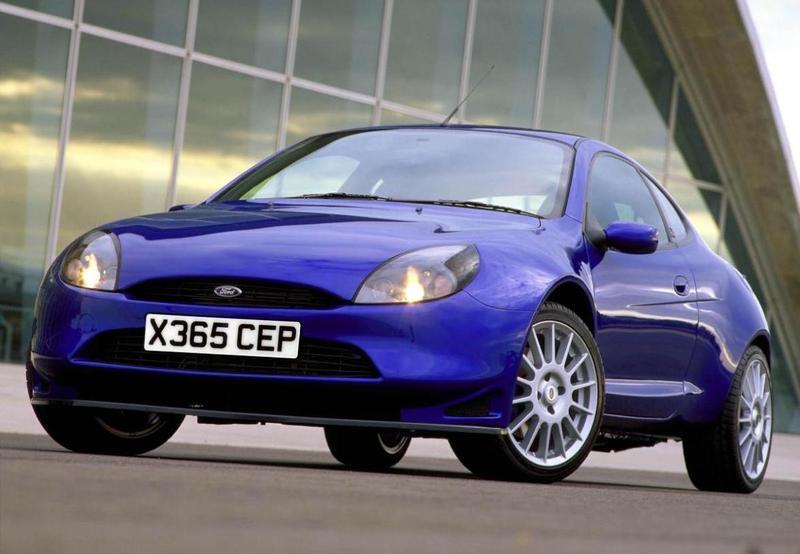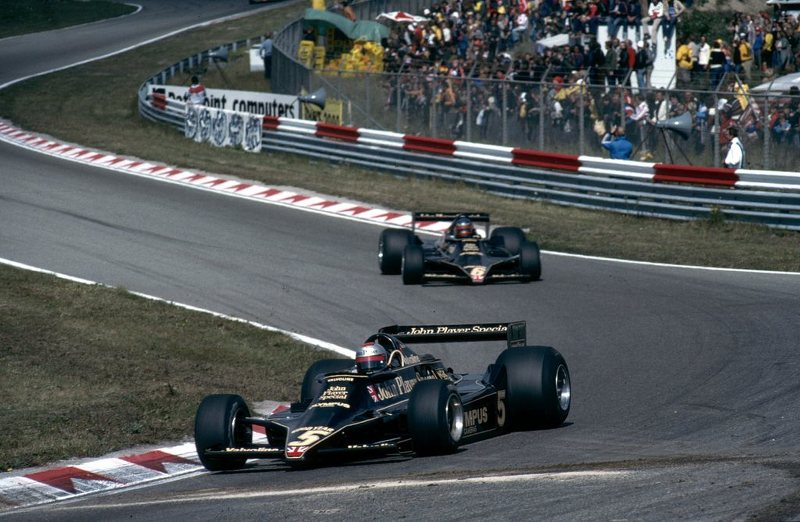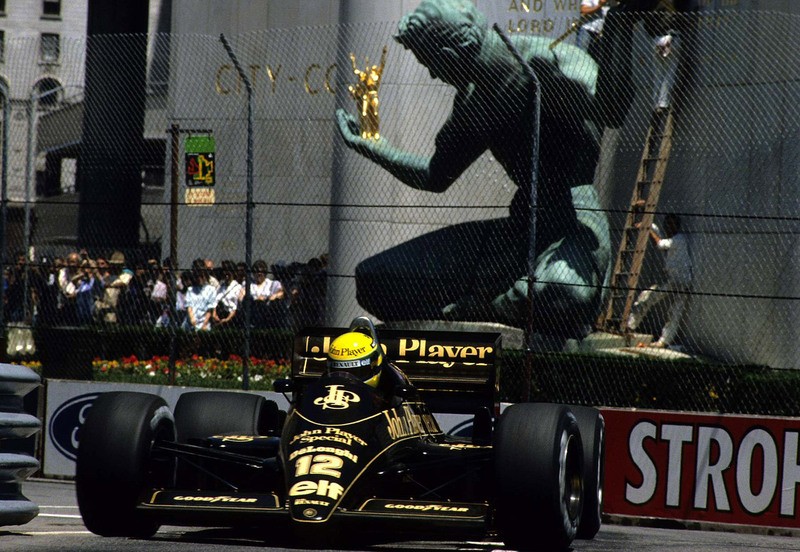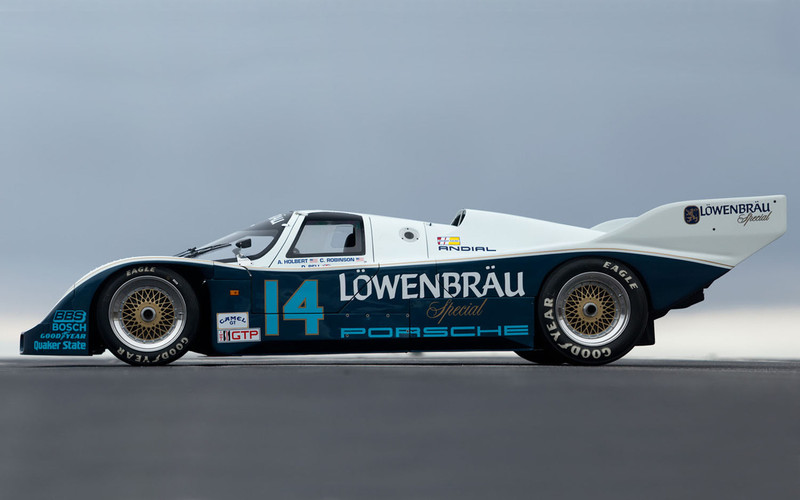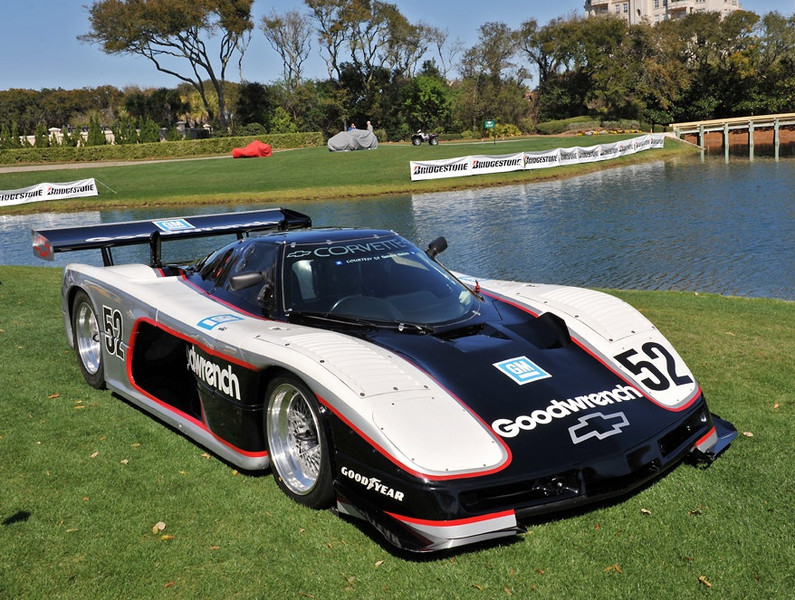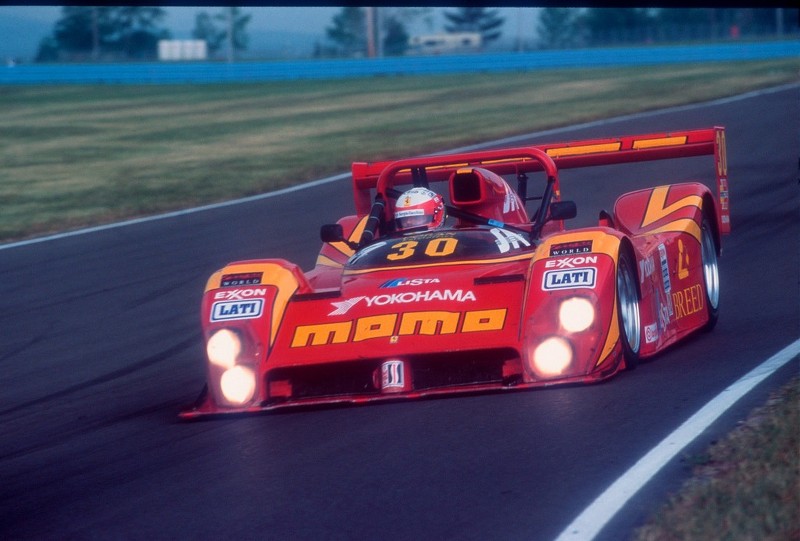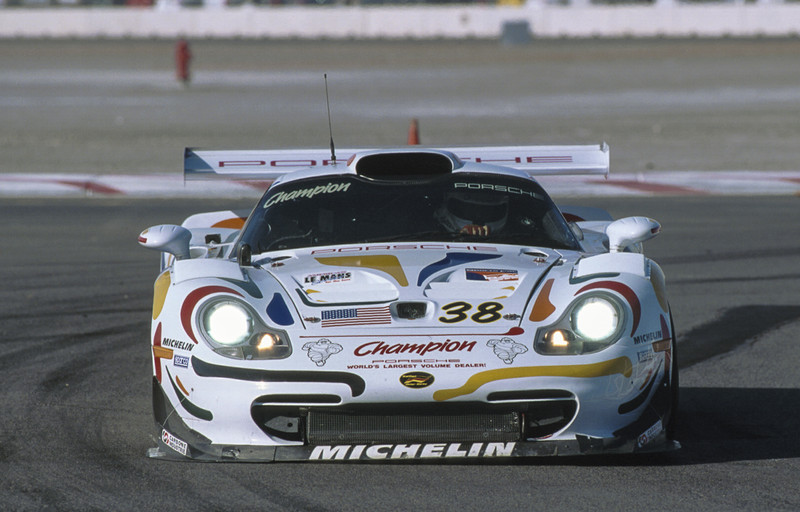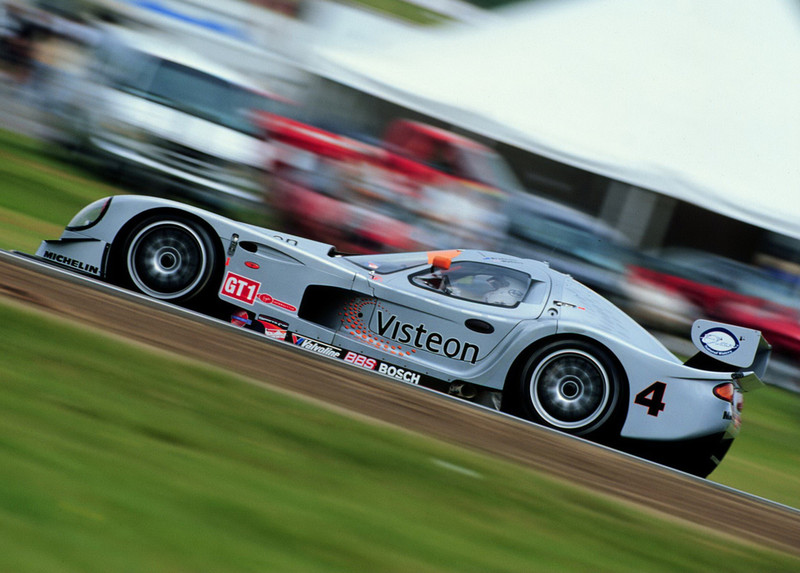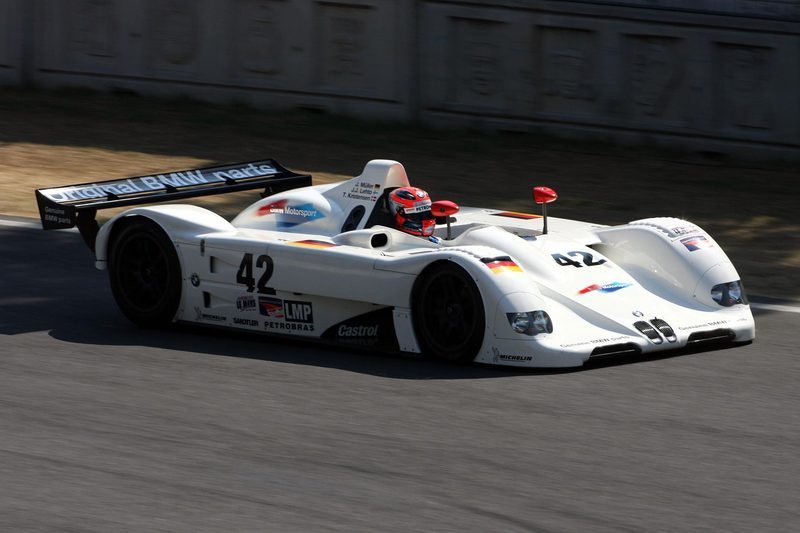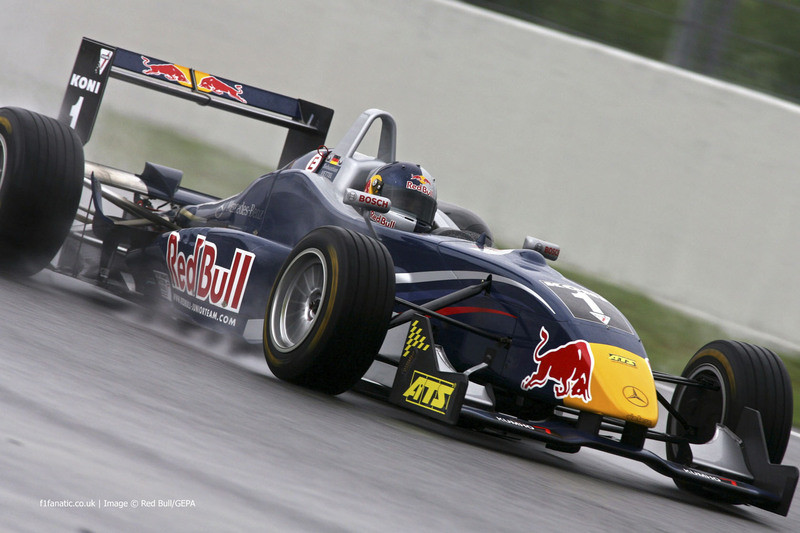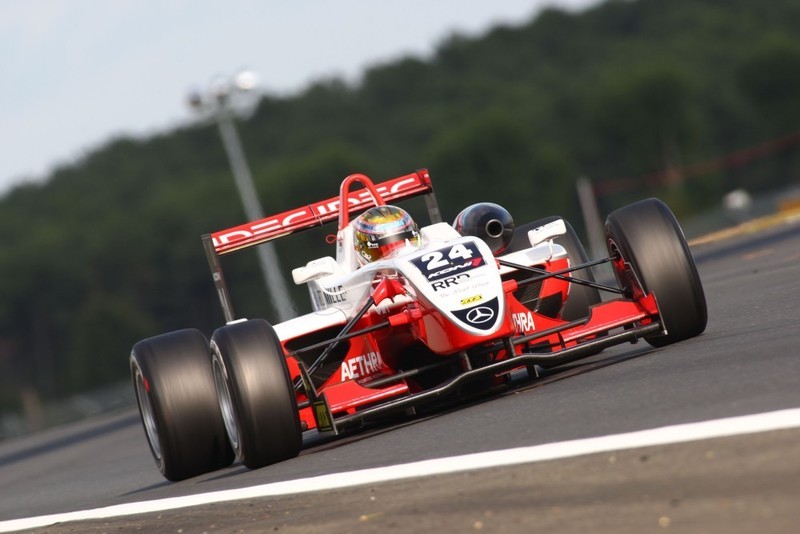Part 11 - For Those That Know The Score....
The 21st Century dawned with a new world opening in front of everyone. 2000 saw President Bill Clinton re-elected, though in a very, very tight race against Arizona Senator John McCain and famed Army General Colin Powell, with McCain showing that the Republicans' once-clear disdain for union voters was as dead as the dodo bird, even to the point that the UAW seriously wavered between endorsing Clinton or McCain. The dot-com boom and America's finances, which had been deep in surplus zone for all of the 1990s (peaking in 1998 with a $372 Billion federal government surplus) was leading to calls for major expansions of America's infrastructure as well as tax decreases - and in the election of 2000, this tax cuts vs. public infrastructure debate dominated much of the election, with the Republicans favoring the tax cut option and Clinton calling for the money to put towards better public infrastructure, calling it "essential to assure America's prosperity."
It was also obvious by this point that Detroit was one of the primary drivers of this prosperity. General Motors was the second-largest American exporter by dollar value (only Boeing was ahead), and the Rust Belt was back to humming along nicely - and the center of that was Detroit, whose automotive businesses had redeemed themselves, and new industries located in the Detroit area, along with growing white-collar businesses and a vibrant culture scene, was proving to be one of the better cities of the Midwest, assuming of course that one could handle the bitter cold of Detroit winters. The confidence of the time was such that GM in 1996 bought the Detroit Renaissance Center, built in 1977, and began a huge renovation of it, which was completed in 2002 at a cost of $475 million. That same year, when Sears moved out of its signature building in downtown Chicago - America's tallest commercial building - American Motors made an offer to buy the building from Sears and its co-owners in AEW Capital Management. The deal was done in May 1997, and on July 4, 1997, the Sears Tower became the American Motors Tower, and AMC moved its headquarters and offices from its old home in Kenosha, Wisconsin, to Chicago in 1997 and 1998. (Their engineering staff mostly stayed in Kenosha, though.) The building purchase, said to cost AMC $750 million, was a huge deal, and the subsequent moving in of several other companies helped the landmark property become a major deal indeed. While Ford kept their vast complex in Dearborn, in 2004 Chrysler followed GM downtown, along with Comcast (in which Chrysler retained a huge share) and built their new headquarters in Detroit in the Walter Chrysler Center on Michigan Avenue. The Chrysler complex, opened in 2007, was only for the governance and financial aspects of the industry - design, engineering and most marketing functions remained at the company's vast complex in Auburn Hills.
The dot-com boom, however, came to a major halt during 2000, causing a major slump in the electronics industry - a slump that lasted through 2000 and 2001, and resulting in some major consolidations and several big corporate failures. The slowdown in this part of the economy did, however, allow savvy investors at the bottom of the slump to buy up some big companies for small pieces - and there was no shortage of these in Detroit or among its subsidiaries. The biggest grab was Linamar Visteon's purchase of a huge chunk of then-bankrupt MCI Worldcom in 2003, integrating it into Visteon as Visteon Mobile Communications. The prize was MCI's mobile communications technology, which Visteon and Ford wanted to integrate into future cars by the automaker, aiming to rival GM's OnStar service. The Visteon Sync system began appearing on Ford cars in 2004, and spread across the lineup by 2006. But the biggest event of this era came on the morning on September 11, 2001, in New York City.
The 9/11 attacks were an event which stunned the whole world and infuriated the majority of it in equal measures. The 22-man attacks, consisting of four airliner hits on both World Trade Center towers, the Pentagon in Washington and a fourth airliner (this hijacked aircraft crashed into the Three Mile Island near Harrisburg, Pennsylvania, causing a considerable amount of damage to the facility and nine lives lost at the facility but no radiation issues, it has been surmised that this aircraft was meant to crash into the US Capitol), as well as a trio of suicide bombers, hitting Michigan Central Terminal in Detroit, Chicago Union Station and the third exploding on an Amtrak Acela Express train just passing Bridesburg station in North Philadelphia. The bombers struck worst in Philadelphia, causing the Acela Express to jump the tracks at nearly 150 mph and ploy through both a SEPTA commuter train and into a Conrail freight train on the corridor, killing 211 people and injuring 725, while the bombers in Chicago and Detroit both hit minutes apart during morning Rush Hour and killed 104 and injured over 1500. All of that, of course, paled to the attacks on the Towers and the Pentagon. The overall loss was just over 3300 lives, the worst single-day death toll in American history.
The attacks caused an explosion of every emotion imaginable, and Detroit was not immune to it by any stretch. The airspace of the United States was closed suddenly as a result of the attacks, and stayed closed for six days, and two amazing events happened to this. The first was Operation Yellow Ribbon in Canada, where over 300 commercial flights headed for the United States were diverted to Canadian airports - in the most amazing case of this, the tiny town of Gander in Newfoundland took in 39 flights, with 6,600 passengers, in a town with a population of less than 10,000. The work of the Canadians amazed and impressed their sudden visitors, who in places like Gander opened their homes and their hearts to them. One of these people was GM's Vice-President, Rick Wagoner, whose Northwest flight was diverted to Gander, and where him, his wife and two daughters stayed with a local family for six days until the flight could continue to Detroit. Wagoner never forgot this - he made a point when he got to Detroit of explaining just what had happened, where he had been and the generosity and warmness of the people in the tiny town in Newfoundland. Wagoner, who became GM President in 2003, made a major donation to the building a monument to the event in Gander and was on hand when a year later, Canada's Prime Minister and others were there to state how proud they were of the response.
"
One year ago, a horrible day forced myself and more than six thousand others to land in this small town, and when we did, the people here did everything they could for us and asked for nothing in return. I never would have imagined it possible had I not experienced it, and I will say this right now - I have not forgotten the people of Gander, and will not forget the people of Gander. It was a week where a small town in Newfoundland saw the world come to it, and they opened their hearts to those who needed the help. It was the best of humanity at a horrible time for us all, and I think I can say on behalf of all of my countrymen, thank you. Thank you to all of you who helped us." -- GM Vice-President Rick Wagoner, speaking in Gander, Newfoundland, on September 11, 2002
"
9/11 was a shot to the heart of so many people all around the world but especially to America....Terrorism had been seen as a distant problem to Americans, something that didn't happen here, something that American prosperity made impossible and that America's tradition of being an inclusive society would make sure never became a problem we had to face. 9/11 shattered that illusion, and it made Americans realize what happened, and what had to be done to deal with it. But what perhaps showed the most to Americans was that most knew that hurting other Americans wouldn't accomplish a thing, and the few that didn't learned the hard way that everyone else knew better. Once we got over the shock, we went looking to get those responsible, and we both in the process learned a lot about ourselves and even more about the world. If there ever was a silver lining to that most horrible of days, it is that America learned much as a response to it. We couldn't really honor our lost any better." -- Illinois Senator Barack Obama, speaking at the tenth anniversary ceremony of 9/11 in Chicago, September 11, 2011
The shutdown of American airspace also caused a sudden and enormous demand for train travel, as people fought to keep on doing the travel that their lives demanded. Amtrak rose to the challenge, dragging everything they had in storage out during the day and asking for help from freight railroads, commuter rail agencies and anyone else who could help. In keeping with the spirit of the times, nearly everyone who could respond did. Freight railroads sent extra locomotives for Amtrak's usage, Ontario's GO Transit sent five entire trains of cars for Amtrak to use and numerous other agencies came to help. Faced with a massive shortage of motive power but with crews, fuel and water available, a whole bunch of steam locomotives got fired up and sent to help Amtrak as well. Once the Northeast Corridor was re-opened - Amtrak, SEPTA and Conrail repair crews, ably helped by Bechtel construction engineers and Norfolk and Western track workers, had it back open in less than 72 hours - The Northeast Corridor struggled under the load, but handled it without any further incidents, with even Amtrak's CEO and five of its board members pitching in to assist their employees on the NEC. The hurculean efforts paid off in spades. Amtrak coped with the sudden demand explosion amazingly well, hauling its normal passenger load in a month in just 60 hours. To nobody's surprise, the collapse of air travel that followed 9/11 resulted in a huge bailout in November 2001 - but in recognition of Amtrak's Hurculean efforts and acknowledging that high-speed rail had been proven viable by the Texas TGV, Amtrak got a massive $25.9 Billion capital fund and was told to get cracking on the construction of a true high-speed rail system for America. Having begun operations just four months before in May 2001, California's new High-Speed Rail System proved a godsend, a similar story to the Texas TGV. Florida's high-speed rail system, approved in a 2000 referendum, was sped up, with the goal of having a Miami-Tampa-Orlando portion of the system built by 2008. The Amtrak-run Midwestern High-Speed Rail System, having already been planned and scouted out, began construction within eight months, and its first section - the
Wolverine service between Chicago and Detroit - began operations in the fall of 2006. The HSR systems in California and Texas grew dramatically in the years that followed, and the Northeast Corridor's normal passenger load grew over 25% in the year following 9/11.
In the aftermath of the attacks, even the shock of people in the Middle East was palpable - and the United States Government, justifiably enraged at those responsible, went to great lengths to point out that this was an attack by religious extremists. As if to drive the point home with a sledgehammer, when Iranian President Mohammed Khatami asked to see the site for himself on September 24, 2001, President Clinton approved the idea - and Vice-President Paul Wellstone escorted him personally, an act that would end up being one of the media scenes of the decade, a good photographer from Newsweek noting that Khatami was struggling to hold back tears seeing it all. Speaking at the White House later on, Khatami hammered a point which was to be heard many times in the coming years:
"
What I saw in New York City was not the actions of men who believe in God, it was the actions of people who are the very hands of evil, the actors of Satan. Iran and the United States of America have had many, many differences in times past for many reasons, but I wanted to see the place, what you have come to call Ground Zero, to explain to people that no matter our differences and the injustices of times past, nothing could ever justify what I saw. America wants revenge for such actions, they want to bring their righteous anger to bear on those responsible for the people whose lives have been taken. I understand that fully, and I will add to that point. On behalf of all of us, the people of Iran, to hell with them, and to hell with those who would do such actions in the name of God. God will need to have mercy on them, because you have none, and neither do we." -- Iranian President Mohammed Khatami, speaking at the White House with President Clinton, October 6, 2001
It didn't take long for America to jump on the cause of taking down those who had attacked them on 9/11 - and it showed. On October 7, 2001, the first American and British forces landed in Afghanistan, seeking out and destroying the Taliban, followed by massive numbers of coalition troops. They were soon backed up by nations all over the world, And by early 2002 there were over 80 nations in support of the actions to destroy al-Qaeda and find Osama bin Laden. On February 18, 2002, America got its man - Osama's hideout in the Tora Bora mountains of eastern Afghanistan were invaded, and a combined force of United States Army Special Forces and British, Canadian and Australian Special Air Service commandos stormed Tora Bora, ably supported by Dutch Air Force Apache attack helicopters, Iranian Air Force attack aircraft and an American AC-130 gunship. Osama bin Laden was captured in the raid, as was his number two, Ayman al-Zawahiri. After a trial by Islamic law in Jerusalem, bin Laden was convicted of his crimes and sentenced to life in prison, which he would spend at the ADX Florence Supermax prison in Colorado, living there for 16 years before his death with liver failure in 2017. al-Zawahiri was brought to New York to stand trial for the 9/11 trials - and he was reportedly stunned to find a quartet of American Muslims who went to the trial every single day. Once those running the trial noticed that, they made a point of having the people sit right behind al-Zawahiri, a statement that the quartet were more than happy to play along with. Convicted of his crimes as well, the defiant al-Zawahiri was sentenced to death, and he was executed on May 15, 2005, at the Leavenworth Federal Penitantiary in Texas. The master planner of the attacks, Khalid Shiekh Mohammed, got away from Afghanistan - but he didn't get away for all that long. Busted in Karachi, Pakistan, in March 2003, he too was tried, convicted and sentenced to death for the 9/11 attacks, meeting the same fate as al-Zawahiri at the same place on June 24, 2007.
The immediate post-9/11 era saw a sudden rise in American nationalism, and Detroit, with all four of its automakers involved in Formula One and three of the four involved in international sports car racing, suddenly saw a massive growth in the following of its sports, with many people wanting to show what American cars could do. Having had an all-American team and a Georgia-built car win Le Mans in 1999, Panoz was the first to get the support, with Ford and Cosworth jumping on board with their new car for Le Mans for 2002. GM and Chrysler, both with active Le Mans programs, got a very big boost in support and calls for them to go haul ass at Le Mans in 2002, and so they went into the 2002 season with a suddenly-big following and a passionate hope for success. The same was true in Formula One - and with Jeff Gordon's finishing as runner-up to Alex Zanardi for the 2001 Formula One World Championship, the hope was that 2002 would bring success - and with new teammate Justin Wilson, the pair tore through Formula One in 2002, and despite Zanardi's best efforts at a title repeat, Gordon won his second World Championship - and made road racing hit a level of popularity not seen in America in decades.
At Le Mans, hopes were even higher. After dominating the race in 2000 and 2001, Audi suddenly found the hopes of American race fans and the dedicated efforts of three American manufacturers coming for them. The Cadillac LMP02, Panoz LMP02 Roadster II and Chrysler Patriot V were all testing heavily in the early part of the year, and the LMP02 started out fast, running the Audi R8s to the limit at the 24 Hours of Daytona - Cadillac won that - and the 12 Hours of Sebring endurance races, where mechanical problems slowed the Cadillacs as they led the race. The Panoz was not as fast, but it was bombproof reliable and its drivers took advantage of its durability to push and push hard, while the Patriot V was fast but seemingly too-fragile to be able to survive 24 Hours. The overall result was that while Audi had the early edge, they would have to work hard to keep it - and when Chrysler came away with their first IMSA win at VIR in April and Panoz then topped the Audis at Indianapolis in May, Le Mans was looking like a potentially big fight.
And so it turned out to be. The 2002 24 Hours of Le Mans was an off-weekend for NASCAR and Indycar, and Detroit brought out every great driver they could get their hands on. The Patriot V of Tim Richmond, Butch Leitzinger, Robert Evans and Memo Gidley started from the pole position and led the first two and a half hours before the Audis finally overhauled them, but the Chryslers fought on as the Cadillacs moved steadily up the order. They got a bit of luck when an errant GT car ended the day for the fastest of the Audis, causing a huge crash in the Porsche curves from which Audi driver Frank Biela thankfully walked away from. Ten hours in, the lead Cadillac, driven by Casey Mears, Kurt Busch, Al Unser Jr. and Robby Gordon, having left the Chryslers behind, overhauled the leading Audi to take the lead - a lead they would not relinquish, even as the second Chrysler retired with a blown engine and electrical problems slowed the Richmond/Leitzinger/Evans/Gidley Chrysler from contention. The lead Cadillac finished the race the best part of a lap clear of the Audi of Allan McNish, Tom Kristensen and Michele Alboreto. Third went to the Panoz Roadster driven by Mario Andretti, Michael Andretti, David Brabham and Jan Magnussen. A wild footnote to this was that all five classes in the 2002 24 Hours of Le Mans were won by North American teams or cars - with Canadian team Multimatic Motorsports and their Reynard 02S, powered by a turbocharged AMC four-cylinder engine, winning the LMP675 category, while Corvette Racing's lead team of Ron Fellows, Scott Pruett, Dale Earnhardt and Dale Earnhardt Jr. outran the rival Prodrive Ferrari 550 GTs to come away with the GT1 category win (with the Dodge Vipers proving unable to keep up with the Ferraris and the Saleen S7-Rs proving unreliable) and American team The Racers Group and their Shelby Series One GT Le Mans race cars came home with the GT2 category win. The all-American driver squad that claimed Le Mans made a point in interviews of saying that they loved the race, the fans and the sport involved and hoped that they would be back to defend their win. (They would get that wish, though they would not succeed at defending the win.)
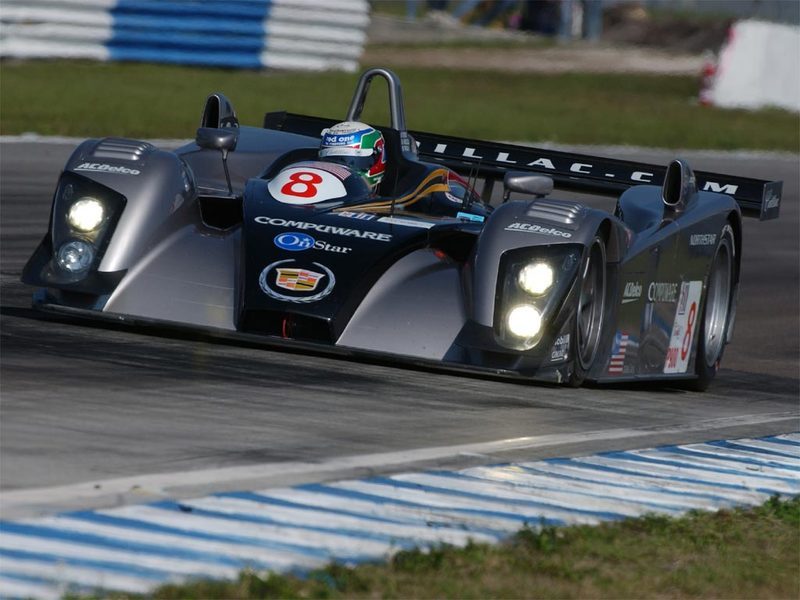
The Cadillac LMP02 that won the 2002 24 Hours of Le Mans, being driven by Robby Gordon during the 2002 12 Hours of Sebring
The Multimatic Motorsports Reynard 02S, testing at Mosport Park in April 2002
For the Detroit automakers, beyond their success in racing, sales of Detroit cars swelled substantially as a percentage of the total market in the last quarter of 2001 and the first half of 2002. It wasn't hurt by the fact that the cars themselves were excellent, but the sense of patriotism was very real, and Detroit sought to take advantage. The Detroit makers, in particular American Motors, were in the process of introducing new models, with AMC bringing out the new Javelin, which was introduced in March 2002 and was instantly on the list of cars people wanted to drive. With a new Camaro due for 2003 and a new Challenger for 2004, It was looking like all of a sudden somebody who wanted a ponycar had a whole bunch of new choices - and Ford, which had dominated the market for years, pushed the new Mustang up to a late 2004 release in large part as a result of the new ponycars from its Detroit rivals.
In large part to the swinging rage of the Detroit makers, several of Japan's bigger players, Toyota in particular, chose to take them on head-on. One of the enduring results of this time was the baby boomers, many of them able by the 2000s to afford to have fun cars, buying up musclecars and cheaper fun cars in huge numbers. Toyota and Nissan got in on the act with the Nissan 350Z in 2003 and the Toyota Supra Mark V in 2005. By 2007, if one wanted a sporty car and had $35,000 to spend on it, they had an amazing number of choices to choose from - with Detroit alone offering the Dodge Copperhead and Challenger, Plymouth Prowler, AMC Javelin, Ford Mustang and Thunderbird, Chevrolet Camaro and Pontiac Fiero, with numerous good choices available from Japan and Europe.
This great image done by Maza on DeviantArt
A 2005 Toyota Supra Mark V
"
It was the fun car revolution on so many fronts that it was amazing. You could buy dozens of cars that people could have fun with, and they just kept on coming, and people kept on buying them. Nobody had any idea of all of this demand, but it was almost like all of a sudden everybody in America wanted a car that was a blast to drive. It hit the Japanese kinda suddenly....but not Detroit. They had been working on that since the Corvair, and people who grew up driving Corvairs or Cavaliers or Mark II Escorts or Sierras or Spirits had learned to drive cars with taut suspension and quick, meaty steering, the sort of car that drove nice at slower speeds but then got up and ran when you wanted it to. Tokyo had to sort that problem out, and they didn't have a lot of time to do it. To be fair, it wasn't like they had no experience at this, but they had to make up for decades of experience from Detroit." -- Sam Mitani, Those Detroit Toys and Their Magnificent Toys
Outside of the sports car and pony car markets, the world of cars was changing all over. In the 1980s, the automakers from Japan had been undercut by those from South Korea, and aside from a few abortive attempts by Yugo and Skoda in the late 1980s and early 1990s, the Koreans were the bottom of the car world in terms of prices and quality - but they began moving up the order in the 1990s and 2000s, leaving another gap in the bottom of the car manufacturing world - which in 2002 was filled by the arrival of Malaysia-based car makers Proton and Perodua. In the opposite direction, however, as the world's economic growth was fairly swift in the 2000s, the market for exporting Americans grew fairly quickly, as markets like India, Brazil, Argentina, South Africa and Thailand swelled as both middle class and wealthy car makers in those nations sought to buy a greater number of automobiles. After China's return to a more isolationist stance after the problems in Tiananmen Square, the biggest beneficiaries were its poorer Asian neighbors - the Philippines, Thailand, Vietnam, Indonesia, Malaysia - and then it went on to India, which had begun a major series of economic reforms begun in 1982 which by the early 2000s were bearing quite a lot of fruit. AMC in particular, using connections through Nissan, invested substantially in India in the 2000s for local production of a number of smaller cars, with GM and Ford not far back. But perhaps the biggest investment of all by any of the Detroit makers came in South Africa.
After apartheid's fall in 1994, South Africa's government sought new foreign investment to further industrial development, and they did fairly well at first - but scored big in 1997, when a group of South Africa's wealthiest investors formed the Reynard Motor Corporation, with famed racing car designer Adrian Reynard giving his name to the venture and South Africa's most famous auto engineer, Formula One legend Gordon Murray, being given the job of lead designer. Chrysler and Peugeot signed on to support the venture, and Reynard and Murray designed four great little cars - the Chaser microcar, Bobcat pickup truck, Fortuna small van and the small Kalahari sports car, all four of which with an MSRP of under $18,000. All were instant successes in South Africa and were soon being exported to Europe, making a name for their being much better-built than most cars in the price range. In 2005, Chrysler and Peugeot bought into the company, including the selling of the Chaser, Fortuna and Bobcat in North America, as all three filled holes in Chrysler's north American market which they had not filled themselves. The success of the Reynard efforts and a number of other efforts led to growing macroeconomic success in Southern Africa in the 1990s and 2000s, creating another market where Chrysler (through Reynard) and Ford (which was one of the last American companies to divest from South Africa in 1988 and one of the first to return in 1991) had an early edge, though Volkswagen, the Japanese and Koreans fought their way in and did well themselves. At the other end of the scale, Chrysler's 1990s refurbishments of their Lamborghini and Maserati divisions was joined by a third acquisition by Chrysler's life-long engineer (and highly imaginative) boss Robert Eaton, Chrysler buying the nearly-bankrupt French sports car maker Venturi in 1999, a move that saved Venturi from bankruptcy (at little cost to Chrysler - the purchase price was just over eight million Euros for the lot) and added another gem to Chrysler's vast crown of prestige marques, a list they added to in 2004 with the reintroduction of the Imperial nameplate on the company's new flagship luxury sedan. Again, Peugeot-Citroen was not out of involvement - the same platform would be used for Citroen's flagship Metropolis four years later - but the Chrysler Imperial came out just as Cadillac's mighty Sixteen did, and both cars clearly were aimed at each other as much as anything from Rolls-Royce, Bentley, Mercedes-Benz, Audi or Lexus.
Another major effect of technological advancement was every other automaker working to chase down the lead held by Toyota, Honda and GM in electric car technology. Ford brought out an electric version of its Focus hatchback in 2006, which was based on the Focus floorpan and basic body style, though that was about where the similarities ended. By 2006, GM had sold over 30,000 EV1s and 200,000 Volts, and a second generation of both cars was on the way, with the second-gen Volt introduced in 2007 and the new EV1 planned for a 2010 launch. Ford's Focus Electric, however, was a direct threat to the EV1, and Nissan's Leaf, which hit the road in 2007, was another such advancement. Both were aimed to combine electric-car friendliness to the environment with being far more usable and versatile than the EV1, though the additional weight and size of the Focus Electric and Leaf meant that it didn't have the EV1 performance or range. Despite that, however, the electric cars in question still sold in considerable numbers, and by the end of the decade, both would have outsold the EV1. On the other end of the scale was one of the first hybrid cars, the California-built Fisker Karma, which used AMC gas engines, Canadian Western Electric electric motors and Panasonic batteries, along with high-end superconducting wiring for the car, a carbon-fiber body and a neat interior, using environmentally-friendly interiors. The Karma, launched to considerable acclaim at the 2006 Detroit International Auto Show, was first delivered to customers in the fall of 2008.
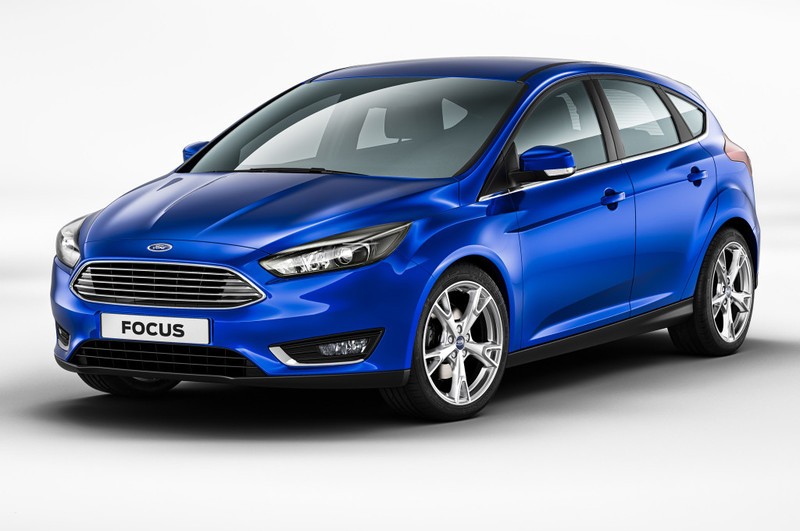
A 2005 Ford Focus Electric
A 2010 Fisker Karma Surf station wagon
"
The Reynard-Chrysler friendship is not the first marriage of American and South African business interests, and not even the first in cars, but it is noteworthy for a lot of right reasons, namely the fact that it means Chrysler and Peugeot are committed to making sure they have a full line-up of excellent cars to sell. It can't hardly be a bad thing for there to be sufficient cars for an customer to choose exactly what they want, and with a Chaser starting at $9,000 all the way up to a Viper that costs over $80,000, it might be best said that Chrysler now has the most full lineup of cars of any of the American automakers." -- Autoweek Magazine on the entry of Reynard cars to North American markets, July 2007
"
When it comes to the Americas, Western Europe, Australia and much of the Americas, the growth of the car market is entirely dependent on economic growth and can't really race forward. We know that at General Motors, and while we will always make cars that the American public will want to buy, the car world doesn't begin and end with the borders of the developed world. For two decades, prosperity has been the order of the day in much of the world, and we want to be part of that prosperity all across the world, including in those places which don't yet, but may one day, have the natural bounty for which Americans take for granted. The world is changing, and America's car makers will be best served by choosing to change with it." -- Rick Wagoner, GM President, talking to Newsweek magazine in June 2007
9/11 was a horrible event, but if anything, so many of the actions of the post-9/11 era, combined with President Clinton's deft maneuvering of international politics and his working with the Arab world after that, led to America's image in the Middle East improving - and with it came both greater prosperity, greater justice for the dead of the 9/11 attacks and, most of all, a sense that the future would indeed be that much better than the past. In what was now one of America's better cities, the Detroit automakers and their legions of engineers, office towers full of marketers and huge factories full of guys building the cars, were right on the front edge of this wave of optimism. It didn't exactly miss anybody's notice that the 2000s, which fused a sudden interest in the world around them (driven more than anything by a desire to kick ass at everything possible) with the internet and a greater-than-ever-before ability to go out and discover the world from the comfort of one's couch. This was not just true in the United States, of course, but if anything the natural tendency of Americans to be optimistic and adventurous combined with the country's growing wealth (particularly in its middle classes), and it manifested itself in changing attitudes about foreign cars in North America, and in many ways it contributed to many of the renaissances many smaller brands in North America had in the 2000s, and one which Detroit in many cases through ownership of the companies benefitted from, and with profitability not even remotely an issue for any of the firms involved the luxury and sporting companies connected to the Detroit makers prospered during the 1990s and 2000s. The quarter-million-dollar Cadillac Sixteen and Chrysler Imperial weren't even the end of the push for either GM of Chrysler, as the rival Cadillac Cien and Chrysler ME-412 supercar concepts showed (Both were made available for special orders, and ultimately 44 Ciens and 30 ME-412s were built for customers) and it showed in the concept cars both produced. Maserati celebrated its rebirth under Chrysler by replacing the flawed 3200GT and 4200GT sports coupes with the excellent Quattroporte V sedan and the jaw-dropping Gran Turismo GT car in 2002 and 2004 and capped it off in 2007 at the North American International Auto Show with the truly stunning Maserati Birdcage concept supercar, while Venturi's Atlantique sports car began being sold in select exotic car dealers in America in 2001. (Eventually, Lamborghini, Maserati and Venturi began selling cars out of their own exclusive dealerships starting in 2007.)
In the everyday car fields, the cars got more interesting as well. Traffic and fuel economy concerns in the 2000s did begin to drive consumers into smaller cars, blunting the SUV boom by 2003 - though these vehicles got a second wind in the development of the 'crossover' SUV category in the mid-2000s. Chrysler's brave decision to expand the use of its excellent rear-drive LH platform to the Dodge Charger in 1997 didn't hurt, and when the second-generation Charger came in 2003, it came with a wagon derivative in the Dodge Magnum. GM had eventually dumped its rather-boring Chevrolet Lumina for the much-better Malibu in 2003, but even that didn't get far, and it would be revamped again in 2006. Ford was the same, developing a medium-size replacement for the Ford Mondeo (which had been sold in North America as the Ford Contour, without much success) in the Ford Fusion, which debuted in 2005 to wide acclaim. The Fusion and Mondeo would be put on the same platform (and with many similarities in styling) starting in 2011. Ford's car lineup in Europe had by this point almost entirely migrated to North America, and with the Fiesta and Focus hatchbacks and the Puma small coupe being bonafide hits, the company leveled out its global lineups by the end of the 2000s, with a Fiesta-Focus-Fusion/Mondeo-Taurus-Falcon car lineup. AMC-Renault-Nissan had got the point, too - the new AMC Medallion introduced in 2002 shared the same platform as the 2003 Nissan Altima, and in both cases the sporty-handling sedans allowed the buyer to chose what drivetrain they wanted from mild to wild to totally nuts - the Altima SE-R / Medallion X twins, introduced in the summer of 2004, had a 344-horsepower Roots-supercharged version of the Nissan VQ35 V6 and boasted 0-60 times in the high five-second range, and came only with a six-speed manual gearbox. Renault's small cars of the time also got more than a few chili peppers shoved up their exhaust pipes, not really a problem in particular for the Renault Clio, whose sporty versions (along with the Acura Integra, Ford Puma, Mazda RX-8 and Asüna Impulse) were the benchmarks of smaller sporty cars. Indeed, so many of these existed by the mid-2000s that everyone who didn't have such a car quickly developed one, and just as with other smaller cult icons of the past, a whole generation of drivers grew up in them, and it showed in the tastes of many of these drivers. Long accustomed to the idea that bigger-is-better in cars, by the 2000s all in Detroit had realized that better-is-better, and that a whole generation of enthusiastic drivers of affordable pocket rockets made sure that they needed to keep making those cars to keep appealing to their drivers.
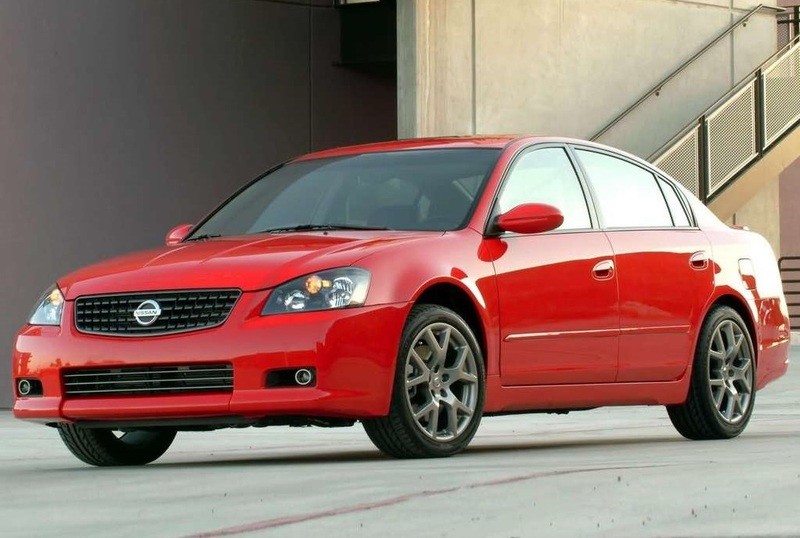
The 2005 Nissan Altima SE-R
A UK-market 2000 Ford Racing Puma - US models are nearly identical
The development of cities in modern America had seen untold changes in recent times, and by the 1970s it had become apparent that the vest sprawl that had dominated American urban development since World War II wasn't working. A handful of major cities took that to heart then and sought to change it, this being particularly notable in densely-populated or land-poor metropolises such as New York City, San Francisco and Seattle and environmentally-minded ones like Portland. But by the 1980s, everybody knew of the problems, and when combined with massive private-sector led urban renewal efforts that began in the first half of the 1980s, it over time led to a total re-alignment of many transportation realities for American cities. The idea of publicly-run heavy commuter rail had begun with Toronto's GO Transit in 1967, but it hadn't taken long for the idea of big commuter trains to stations with wider parking lots in the suburbs to take hold in numerous cities. Combined with many subway and light-rail systems, it made for a revolution in transit development during the 1980s onwards, and even such widespread cities as Houston, Dallas, Detroit and Los Angeles took it to heart. By the 2000s, this manifested itself in far fewer cities that forced one to become a car driver just to have a decent quality of life, and the fact that America's crime rate began to tumble in the 1980s and never really stopped - by 2005, the property crime rate in America was less than a third of what it had been twenty years before - made the centers of cities more hospitable and appealing, if for no other reason than the ability to spend far less of one's life commuting to work. This, in turn, changed the American car market. But what it didn't change too much was the people who built cars for it. With GM, Chrysler and AMC all involved in the locomotive business, it didn't exactly hurt many in Detroit to have mass transit be a much more important portion of American cities, and indeed a vast number of those who took trains or buses to work would happily admit that they drove cars on their errands and in their daily lives and that they took the train to avoid traffic and relax some on their way to work.
Every Detroit maker by now had a long list of performance car legends - the Corvette had been a constant, the Viper a constant since 1991, the Escort RS2000, Fiesta XR3i, Eagle SX/4 and Dodge Shelby Daytona of the early 1980s, the ever-faster musclecars of the late 1980s along with the Fiero and Ford's Cosworth cars of the time and the list of the great cars of the 1990s - from the cheaper-but-still-awesome Dodge Copperhead, the French hot hatches of the 1990s that Detroit built stateside in the Renault Clio Williams and the Peugeot 306 GTi-6 and 106 GTi to the four-car pony car wars by the end of the 1990s, along with the exotic cars - the Corvette and Viper were joined by the Ford GT in 2005, while the Shelby Series One, DeLorean M15, Panoz AIV and Vector M12 added the small-maker touch to the market, with the Saleen S7 taking Ford's legendary Mustang tuner into a genuine car maker. Cars were a passion for some, but the development of better transportation and a wealthier average population turned the automakers all into purveyors of fun cars at all cars, and made sure that no matter what one bought, they enjoyed driving it....

